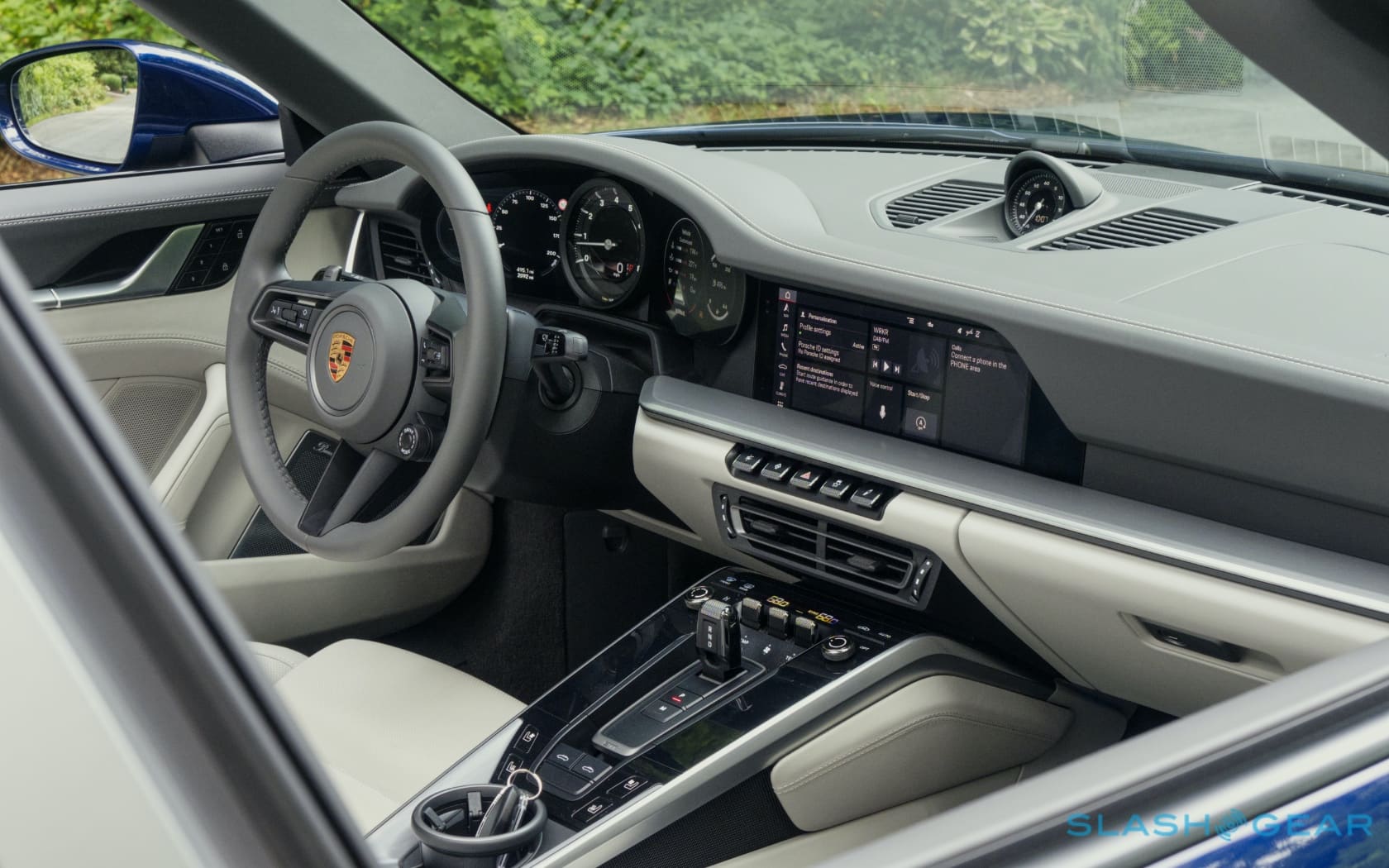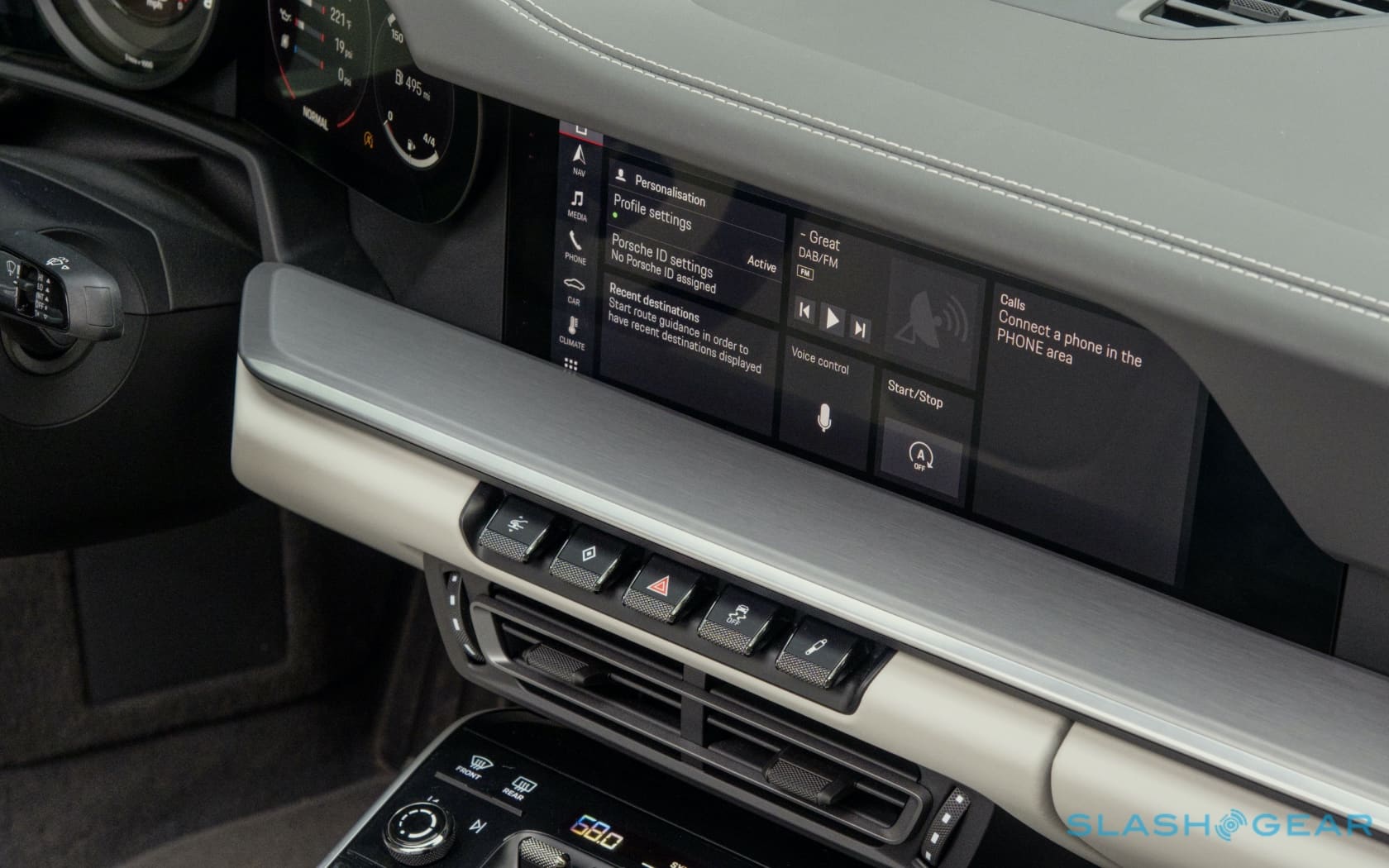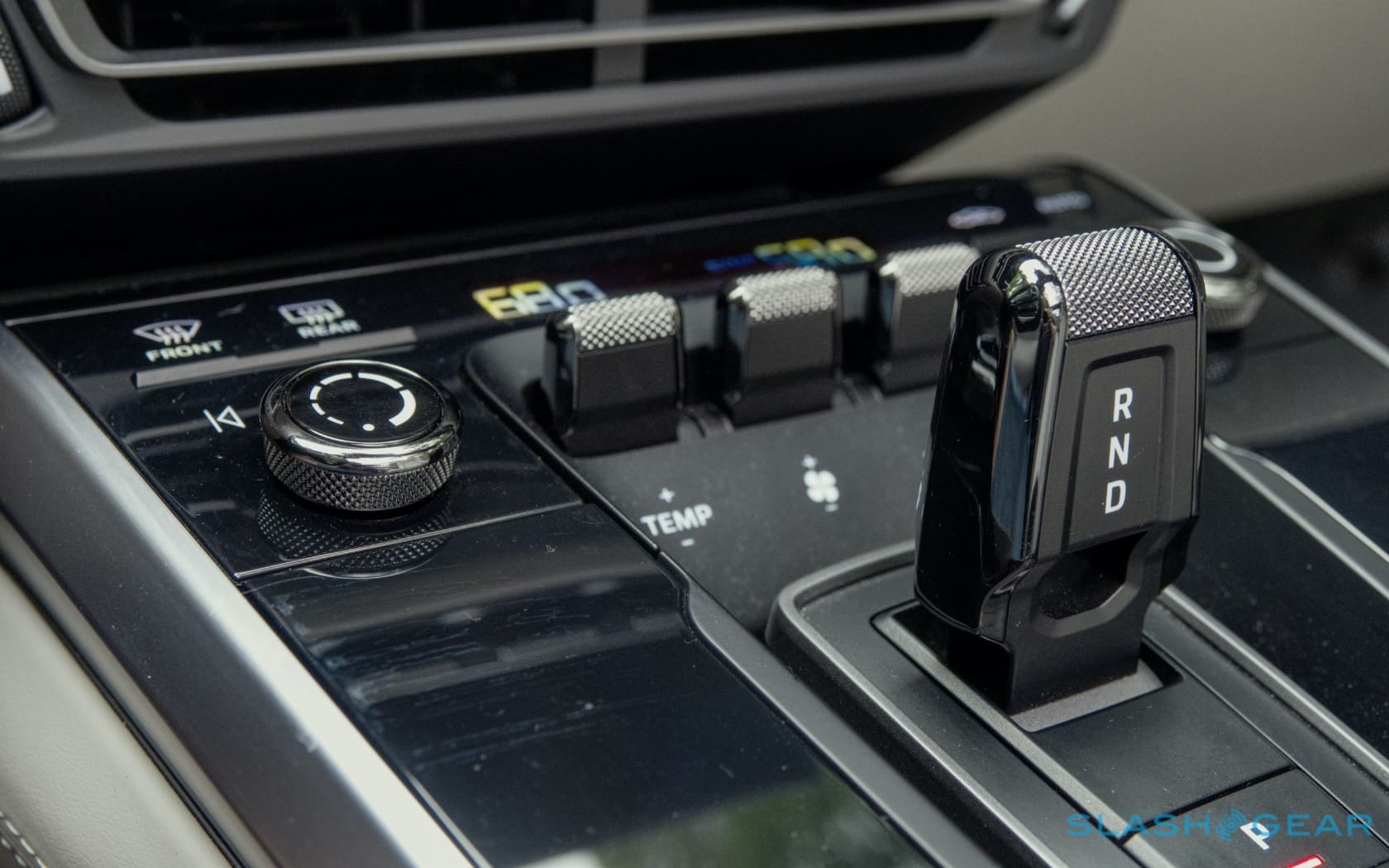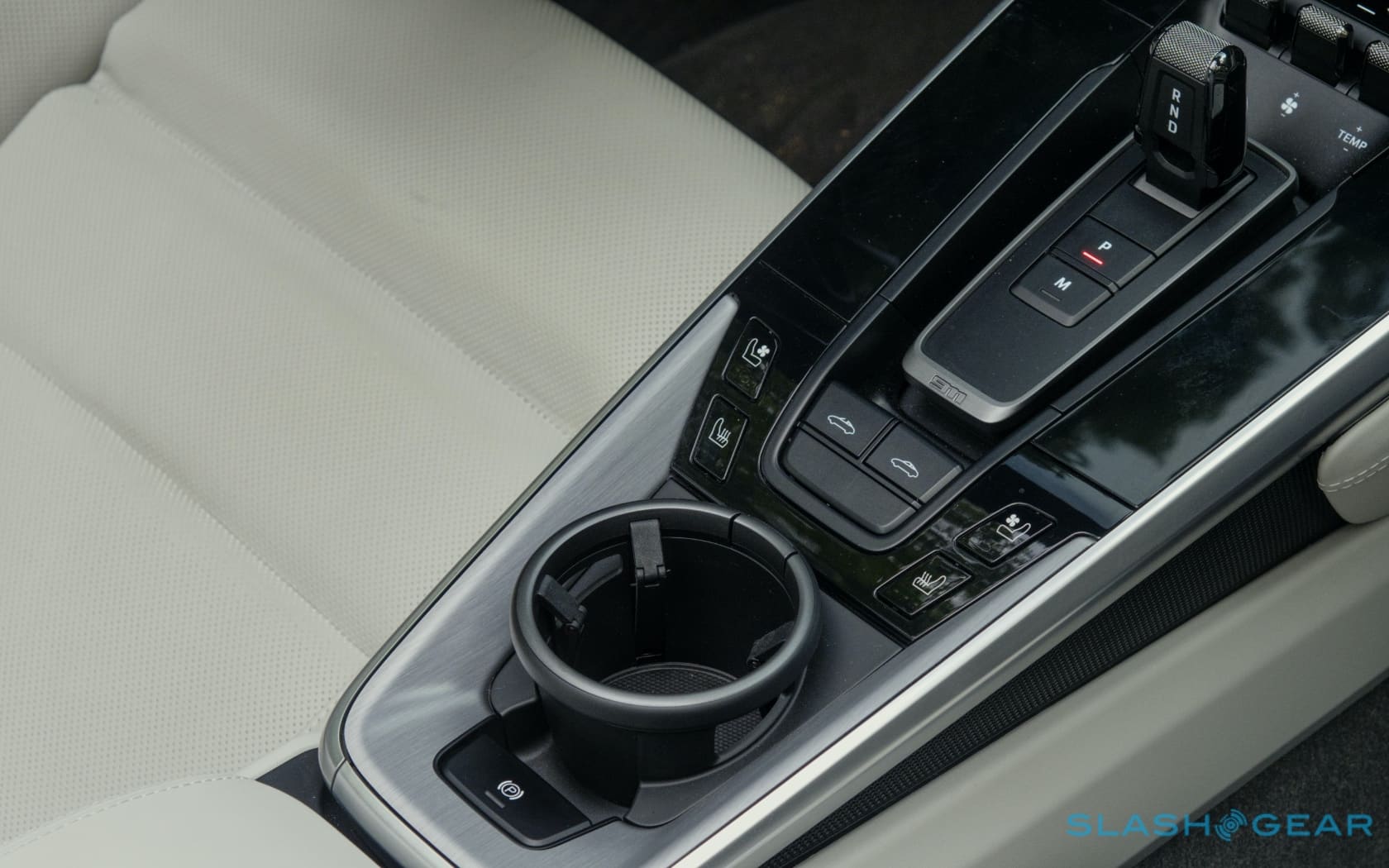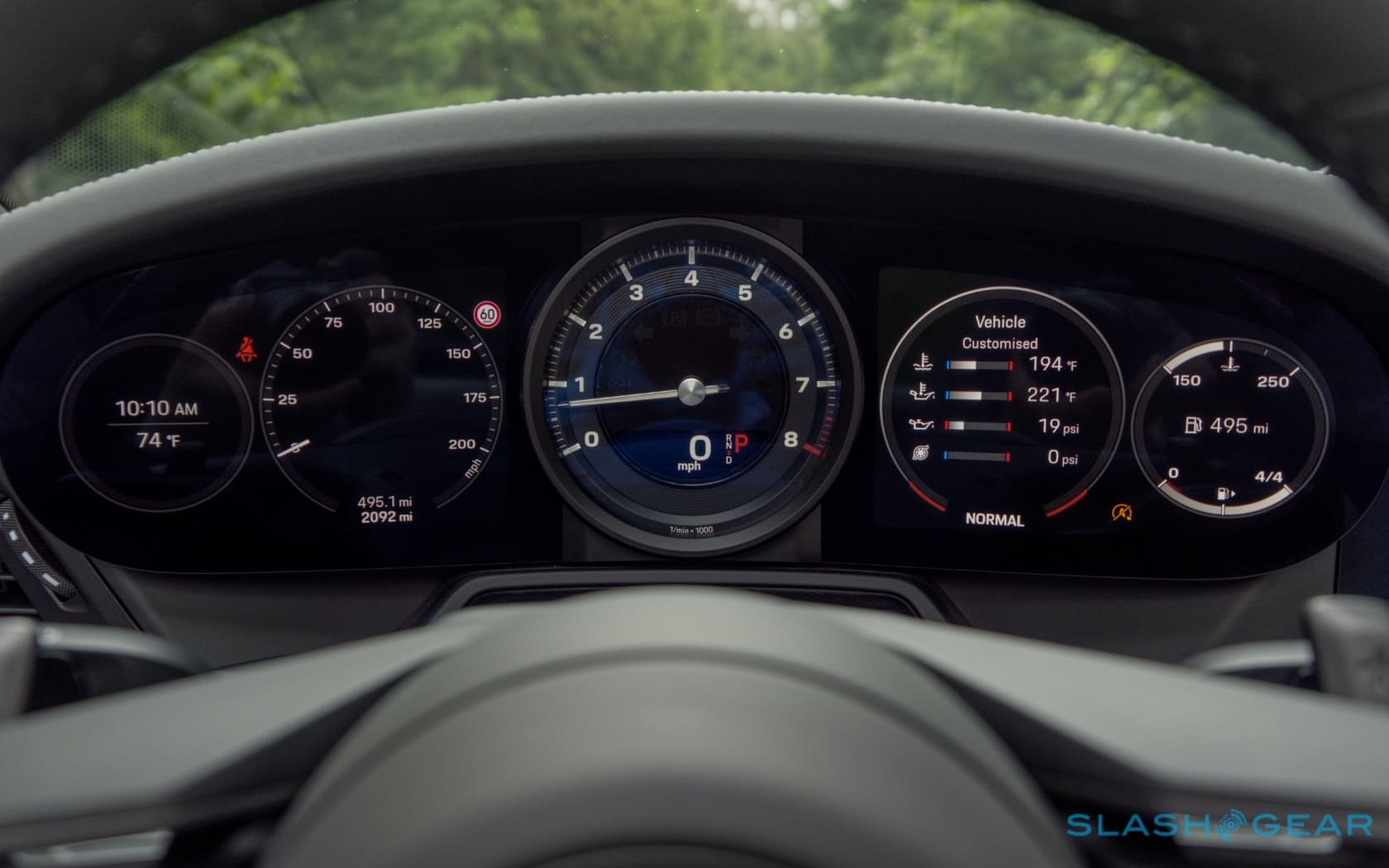2021 Porsche 911 Targa 4 First Drive - Ignore Purists
I don't particularly enjoy convertibles, and that might seem like a rough place to start with the new 2021 Porsche 911 Targa 4. There are generally noise and performance compromises that come with a drop-top, I'm very pale and I burn easily, and they always feel a little more ostentatious and attention-seeking than their hard-top cousins.
Then there are the 911 purists to content with, and oh boy do they have Strong Opinions.
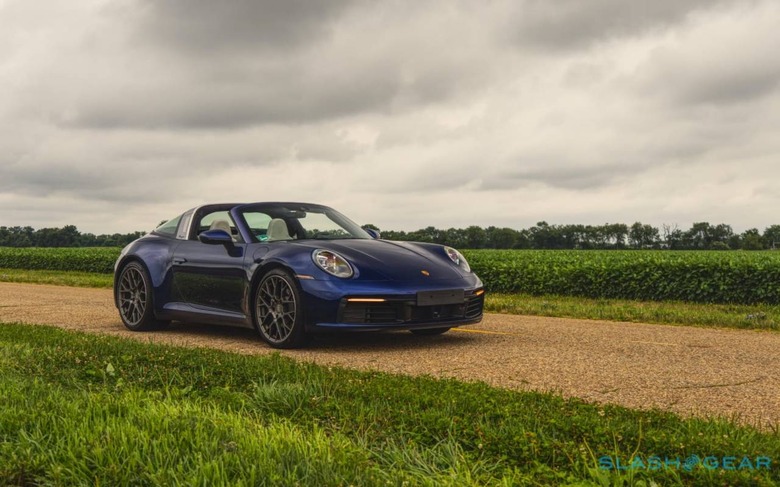
There are several reasons that they'll tell you that the Targa isn't the version to choose. It's heavier, for a start: more than the 911 Coupe of course, but about 44 pounds more than the Cabriolet as well. Taking 4.0 seconds to go from 0-60 mph, it's 0.2 seconds slower than the Coupe, and its 179 mph top speed is 1 mph less, too. You can't have it with a manual transmission, either.
The 911's charm, they'll probably argue, is in its purity and balance. A Targa top, meanwhile, nudges the weight distribution slightly more to the rear. Meanwhile the mechanism itself – which Porsche says is rated for 6,000 operations – adds complexity along with its heft.
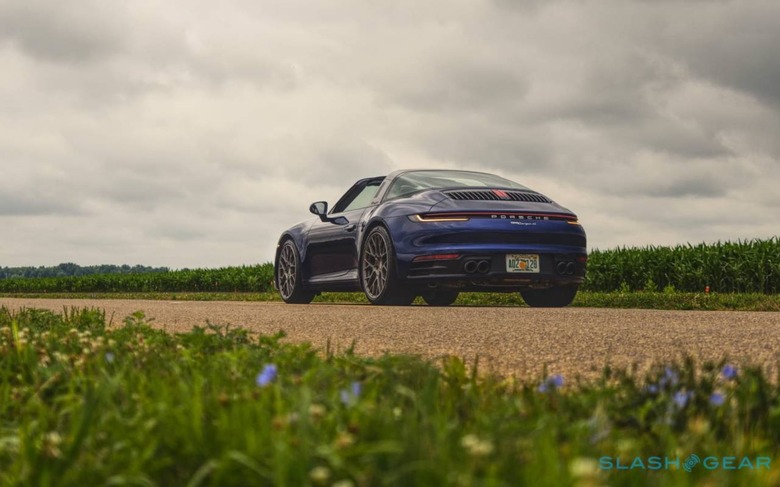
They're all good, solid, mechanical reasons. Reasons that come with a firm grounding in engineering and rationality, indeed, which is why you should ignore each and every one of those 911 purists.
The 2021 911 Targa 4 is every bit as poised, and powerful, and engaging as you would want your 911 to be. I'll concede, if you're looking to set a lap record and you're a particularly adept track driver, there are probably more suitable models in Porsche's range to look to first for that. I am neither of those things; I just enjoy fun cars.
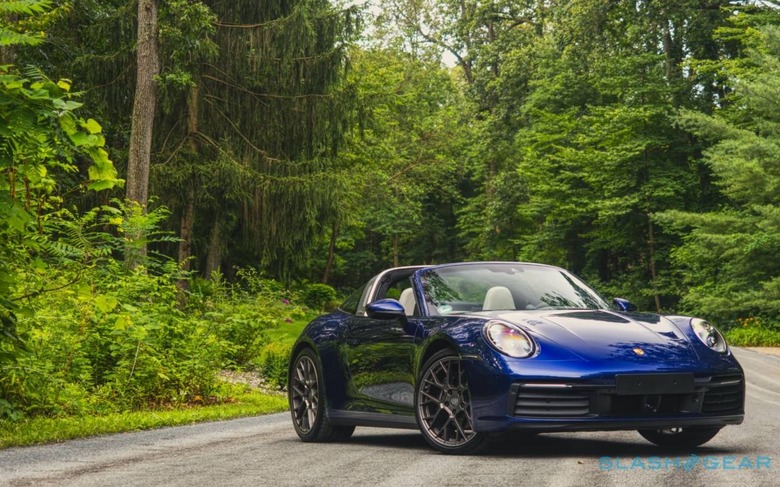
For the same reason, I'm not sure I'd stretch to the 911 Targa 4S. Sure, you get 443 horsepower instead of 379 hp from the 3.0-liter twin-turbo flat-six, and the top speed nudges up to 188 mph, but I think there are better ways to spend the $16k delta between the two. On regular American roads, with regular American speed limits, more power feels... wasted.
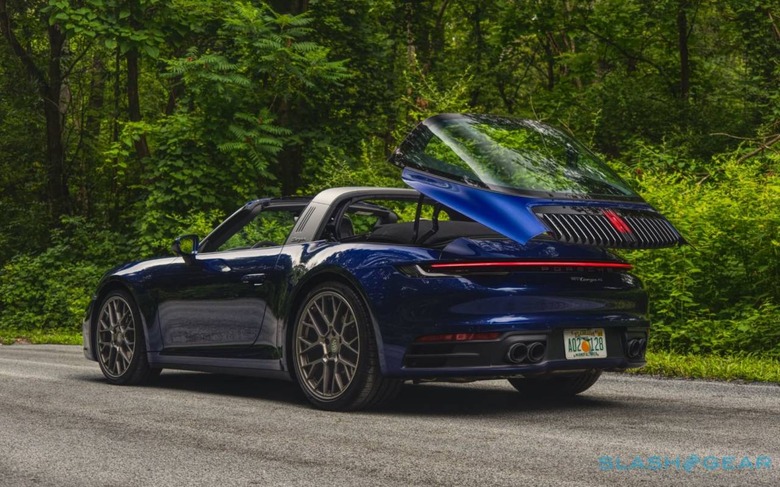
It also ignores the Targa's greatest lure, which is the Transformer-esque poetry of its convertible roof. You could make the argument that it's an atypical endeavor from an automaker like Porsche, which is usually so resolutely focused on performance. I think, though, that it's really just another expression of the company's commitment to doing something unusual, uniquely.
It takes about 19 seconds to open or close the top, all of them fascinating. First, the whole rear glass and metal section lifts, and gracefully pivots back. Porsche uses the parking sensors to make sure it's not going to hit something in the process; if there's a possible blockage, the roof freezes and the rear camera automatically brings up a view of the issue on the cabin display.
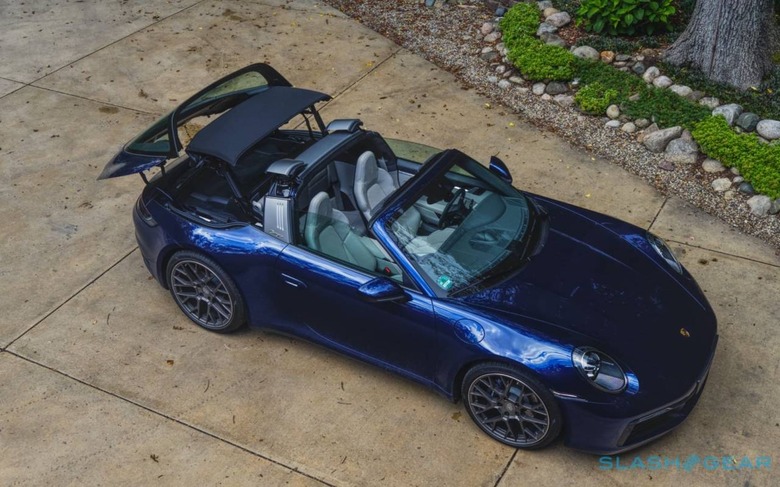
Then arms gently lift the fabric roof panel – in fact fabric wrapping two magnesium plates – and, as the silver end-caps of the Targa bar hunch open like an insect wing carapace, sweep it back and away from the cabin. The caps click shut again, and finally the rear section is restored.
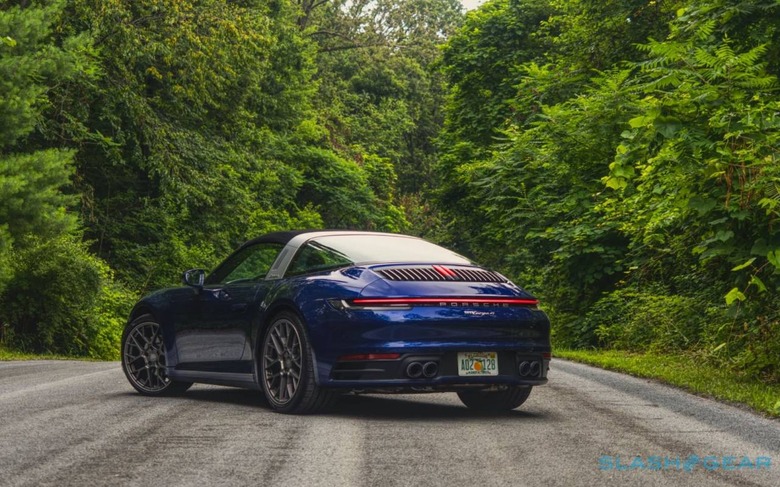
Owners in Europe will be able to trigger it all from the Targa's key, and watch the roof's dance from afar. North American cars, though, miss out on that feature; instead you'll have to keep your finger on the switch inside. A wind deflector works at speeds between around 25 and 93 mph, to help cut buffeting and rumbling when the top is down.
On the road, Porsche says, the volume in the 911 Targa is about the same as in the 911 Cabriolet. It's a different type of noise, though. The expanse of rear glass cups you in the engine's gurgle, somehow, even as you're feeling a little more isolated from the rest of the world than you would in a normal drop-top.
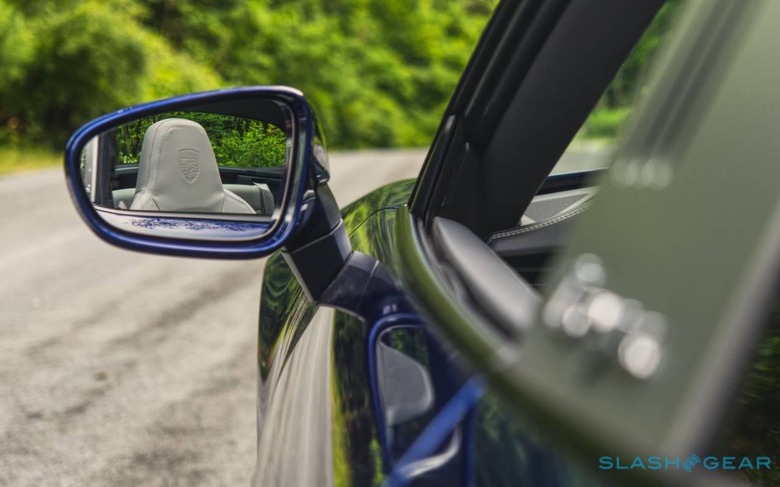
The engineers may have had to tweak the damper and PDC software, among other things, to account for the change in weight and balance, but the end result is a 911 that drives like, well, a 911. Under most conditions the rear wheels get the lion's share of the power; only if things are slipping does the all-wheel drive system funnel up to half to the front. One of the dashboard displays can show just where that power is being portioned out, but aside from nudging forward for maximum traction from a standing start, most of the time you'd think you were in a rear-wheel drive car.
Steering, too, is crisp and direct, particularly when you notch the drive mode dial on the steering wheel up through Sport and Sport Plus. There's no manual option, no, but Porsche's eight-speed PDK transmission is so good that only those surly purists will be left complaining at the end of a long test drive. You can get the ceramic composite brakes (PCCB) as an $8,970 extra, but the standard brakes are more than sufficient.
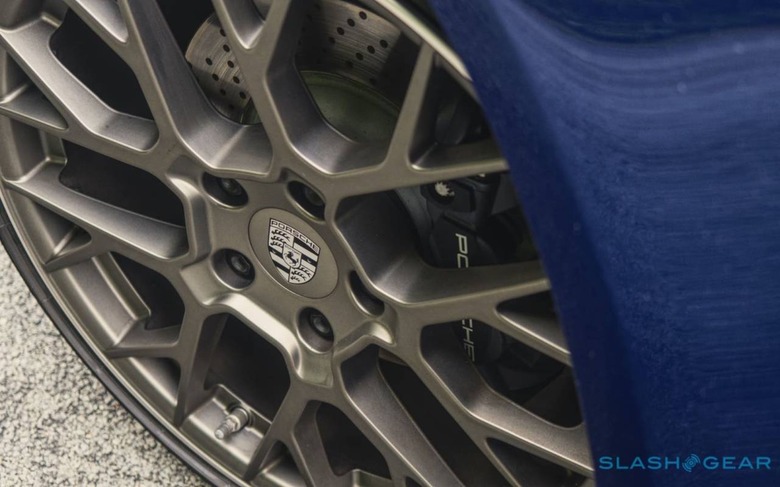
Few cars exemplify the grand touring spirit as well as the Targa. On the highway it soaks up miles, only the occasional stiff judder from the optional RS Spyder Design wheels (20-inches up front, 21-inches at the back, and $3,740 out of your wallet) intruding into the well-proportioned cabin. There are rear seats, at least in theory, but I suspect most will treat the 911 as a ride for two and rely on the space behind them for extra luggage.
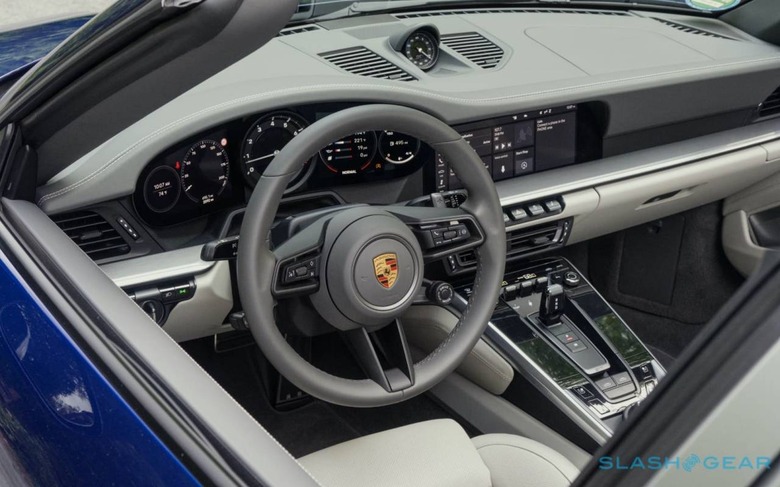
Turn off the highway, though, and the 911 Targa 4 is as eager and playful as you'd want it to be. Enough power that it's fun, but not so much that you never get to hear the redline approach without simultaneously fearing for the future of your license. It may be wearing a fancy roof, but at its core this is the 911 we know and love.
When it arrives in US dealerships this fall, the 2021 911 Targa 4 will start from $119,300 (plus $1,350 destination). With its leather interior ($4,960), Porsche Torque Vectoring Plus ($1,500), Sport Chrono Package ($2,790), Adaptive Sports Seats Plus ($3,470), Night Vision Assist ($2,540), Porsche InnoDrive adaptive cruise with lane-keeping ($3,020), Burmester audio system ($5,560), and several other options, though, this handsome Gentian Blue example was already over $160k.
You can safely skip many of the options and still have a superlative grand-tourer-cum-corner-plaything, though. Save profligacy for the sense of just how special the 911 Targa 4 is, and how it adeptly straddles the line between focused intent and usable melodrama.
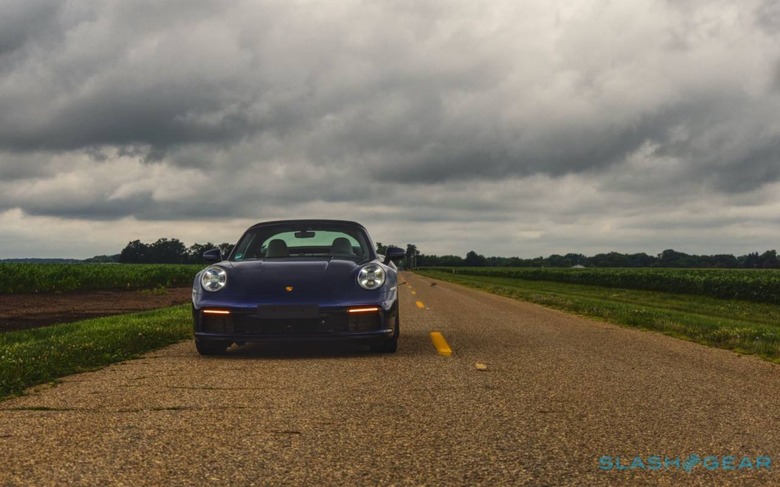
There are a few annoyances, because nothing is perfect. The analog tach is flanked with two pairs of digital gages, but the 911's wheel obscures part of each outer panel. Porsche's big 10.9-inch infotainment touchscreen is crisp and and its software straightforward, especially if you take the time to pull your favorite widgets forward to the home screen, but the way it's inset into the dashboard can make hitting icons at the very bottom tricky.
Otherwise, there's a neat balance between physical and visual controls, and Porsche's switchgear feels solid and premium. You get Android Auto and wireless Apple CarPlay, too, while heated front seats, twin-zone climate control, and embedded 4G LTE with WiFi are all standard. The front luggage compartment is just 4.6 cubic feet, leaving even the Lexus LC's tiny trunk feeling spacious.
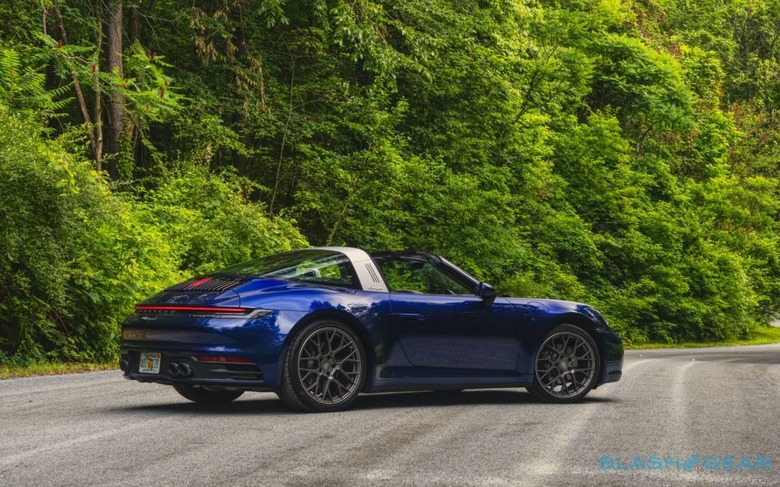
The old Targa only made up around 15-percent of 911 (991) sales in the US, excluding Turbo, GT, and limited edition models. Porsche expects about the same for this new, 2021 version. That rarity only adds to how unique the new Targa feels.
It's a convertible with the refinement of a coupe, but with a party trick that outshines both. All the usability and engagement associated with a 911, in a package that honestly feels like the best of both worlds. If Porsche's icon is special, then the 2021 911 Targa 4 is special-plus, and you don't even need to be a convertible fan to appreciate that.

